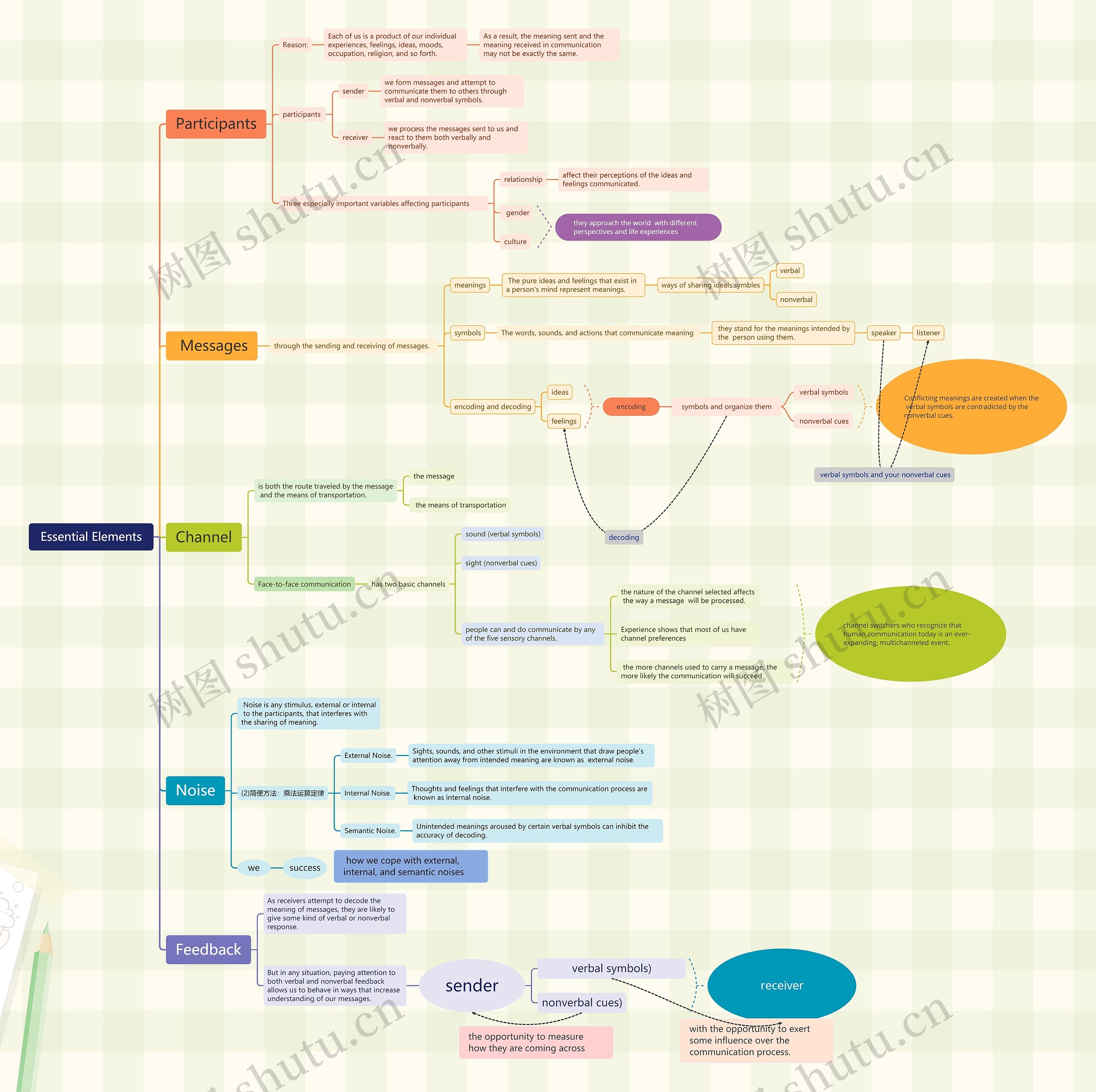Essential Elements思维导图模板大纲
Participants
Reason:
Each of us is a product of our individual experiences, feelings, ideas, moods, occupation, religion, and so forth.
As a result, the meaning sent and the meaning received in communication may not be exactly the same.
participants
sender
we form messages and attempt to communicate them to others through verbal and nonverbal symbols.
receiver
we process the messages sent to us and react to them both verbally and nonverbally.
Three especially important variables affecting participants
relationship
affect their perceptions of the ideas and feelings communicated.
Messages
through the sending and receiving of messages.
meanings
The pure ideas and feelings that exist in a person's mind represent meanings.
ways of sharing ideals:symbles
symbols
The words, sounds, and actions that communicate meaning
they stand for the meanings intended by the person using them.
Channel
is both the route traveled by the message and the means of transportation.
the means of transportation
Face-to-face communication
has two basic channels
people can and do communicate by any of the five sensory channels.
the nature of the channel selected affects the way a message will be processed.
Experience shows that most of us have channel preferences
the more channels used to carry a message, the more likely the communication will succeed
Noise
Noise is any stimulus, external or internal to the participants, that interferes with the sharing of meaning.
(2)简便方法:乘法运算定律
External Noise.
Sights, sounds, and other stimuli in the environment that draw people's attention away from intended meaning are known as external noise.
Internal Noise.
Thoughts and feelings that interfere with the communication process are known as internal noise.
Semantic Noise.
Unintended meanings aroused by certain verbal symbols can inhibit the accuracy of decoding.
Feedback
As receivers attempt to decode the meaning of messages, they are likely to give some kind of verbal or nonverbal response.
But in any situation, paying attention to both verbal and nonverbal feedback allows us to behave in ways that increase understanding of our messages.
they approach the world with different perspectives and life experiences思维导图模板大纲
encoding思维导图模板大纲
symbols and organize them
Conflicting meanings are created when the verbal symbols are contradicted by the nonverbal cues.思维导图模板大纲
channel switchers who recognize that human communication today is an ever-expanding, multichanneled event.思维导图模板大纲
how we cope with external, internal, and semantic noises 思维导图模板大纲
the opportunity to measure how they are coming across思维导图模板大纲
with the opportunity to exert some influence over the communication process.
思维导图模板大纲

